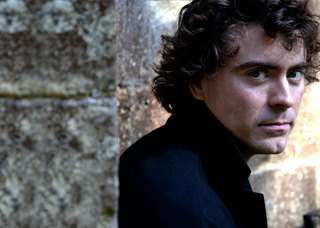|
Back
The Unremitting Schubert New York
Starr Theater, Alice Tully Hall, Lincoln Center
10/20/2012 -
Franz Schubert: Sonatas in C minor, A major & B-flat major, D. 958, 959 & 960
Paul Lewis (Pianist) 
P. Lewis (© Courtesy of the Artist)
Behind Me–dips Eternity–/Before Me–Immortality.
Emily Dickinson
A trademark of the White Nights Festival programs is a poem, which, while not directly affecting the music of the evening, can set the mood. Emily Dickinson’s work, though, could encapsulate last night’s recital.
The three sonatas, all written in 20 months, were amongst the final works of his 31 years of life. For the past five years, he had been suffering great physical pains, probably from syphilis, but his music rarely showed it
In fact, while the body was churning with agony, the mind was creating music which–unlike Mozart, who tailored his pieces to his customers–was pure inspiration. One could say, then, that behind Schubert was music from the “Eternal”. Before Schubert was (what he probably knew but could never say) “Immortality”.
With enough audacity, one could point to sections of these sonatas, and call them his harbingers of death. The eccentric rambling in the second movement of the A major Sonata or the low B-flat trill of the B-flat Sonata. But that reads too much into a man who idolized Beethoven’s integrity and refused to wear his pain upon his sleeve.
This is the way the young British pianist Paul Lewis performed these works. He is a pianist who plays the Schubert with stern regularity, with a seriousness which is sometimes unnerving. He started the concert with the commanding measures which the C minor Sonata deserved, yet the more lyrical second section had that same rigor, that same sense that this was music which shouldn’t show its emotions too much.
Nothing is wrong with that image, but Schubert sometimes needs tender loving care. In my Urtext version, the second movement theme repetition changes from piano to pianissimo, but one hardly heard Mr. Lewis’s change. He did add some of the jauntiness to the finale, but this was otherwise an ironclad Schubert.
Nothing can detract from Mr. Lewis’s virtuosity. The long runs of that second movement were flawless. And that was perhaps a problem. Nobody knows quite what to do with these 32nd-note trills and runs, which sound vaguely bel canto, even more vaguely cries of helplessness. But this is exactly why the movement is so fascinating, that great pianists can try to plumb a dramatic idea from the near-chaos. Mr. Lewis played it directly, as if these measures were the most normal in the world But they aren’t. In a way, Mr. Lewis’s fingers had more wonder than his feelings.
In both sonatas, Mr. Lewis went directly from third to fourth movement without a pause. One wishes he had stopped for a few minutes, since he was not afraid in either case to let Schubert’s humor erupt.
The final B flat Sonata rarely fails with a pianist of Mr. Lewis’ stature. For some reason, he didn’t repeat the first movement exposition, but these truncations are not terribly annoying. His mastery of the keys was such that the full house audience rose to its feet at the end, though, I feel, less then spontaneously.
To his credit, Mr. Lewis gave no encore. A musical moment would have detracted from the grandeur of the three sonatas. It was obvious as well that Paul Lewis, putting Schubert’s mystery to the side, has almost too much esteem for the notes themselves.
Harry Rolnick
|